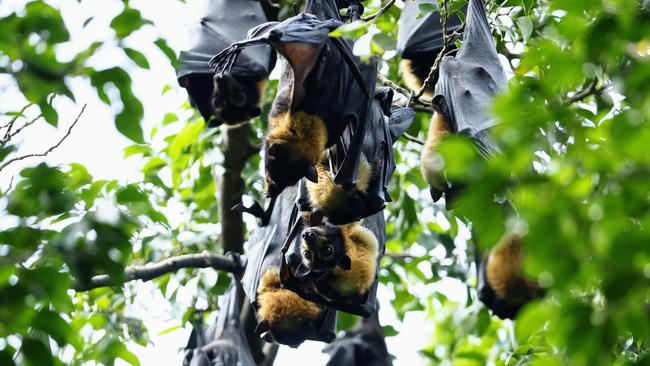Cairns Regional Council to spend $140,000 to remove more flying foxes, with possible ramifications
Council will spend thousands to remove more flying foxes from a Cairns park, but environmental advocates say the ramifications could be catostrophic.
Cairns
Don't miss out on the headlines from Cairns. Followed categories will be added to My News.
Cairns Regional Council intends to splash $140,000 to remove flying foxes from Brinsmead Park Reserve, but environmental advocates have said the council’s plans could be catastrophic.
At Wednesday’s ordinary meeting, Cairns councillors will consider endorsing a flying fox management funding application made by council’s officers to the Department of Environment and Science.
The application seeks $68,752 from the department, which the council will match, to fund deterrent management actions that would effectively remove flying foxes, a keystone species, from the park reserve.

The council has previously used the management technique to remove the animals, also known as fruit bats, from the Cairns Esplanade and Cairns City library, and councillors are all but certain to endorse the method for Brinsmead.
The report to be put before councillors stated growing bat numbers could cause an increase in “human/animal conflict”; that is, bats disturbing residents by making noise and defecating on nearby property.
A council spokesman said council was undertaking dispersal actions to prevent a large maternity roost establishing at the park before birthing season in September.
But Cairns and Far North Environment Centre director Lucy Graham said dispersal is unlikely to solve the problem and a different management practice ought to be employed.
“Dispersal is not best practice for roost management. If Cairns Regional Council keeps dispersing flying foxes it’ll have to do it continually as the bats will just take up residence elsewhere,” Ms Graham said.

“In Brisbane and the Morton Bay region councils have identified major flying fox camps and restored the vegetation around them, and paid dividends to local residents who live near the roosts and need to pay more for cleaning fees.
“Currently, there is no requirement under legislation for local governments to follow best practice which is why we’re seeing such disparity between the methods of Cairns Regional Council and other councils. We’re in contact with DES, advocating for best practice legislation. We’re hoping the new minister will meet with us.”
According to the council’s own data, the Brinsmead flying fox population had already dropped from 7200 animals in November 2022 to 340 animals in March.
Maree Treadwell Kerr, president of Bats and Trees Society of Cairns, said the Far North’s flying fox population had decreased 80 per cent since 2004, shunting them towards critically endangered status.

She said the council’s consistent dispersion method was hindering conservation efforts of a species that was inextricably tied to the survival of the wet tropics ecosystem.
“One heat stress event in 2019 killed 23,000 bats in the region, or 30 per cent of the existing population. Now, we’re just one more heat stress event away from the species becoming functionally extinct, where there aren’t enough bats to perform their ecological role,” she said.
“Flying foxes are ecologically vital for long-distance pollination and seed dispersal. One bat can disperse 60,000 rainforest seeds up to 80km from the parent tree in one night. That makes them a keystone species for the wet tropics. If we lose them, we lose the rainforest.
“Dispersing forces them into places where they could come into conflict with other residents. This money could be put into restoring habitat around their roosts.
“Every time a dispersal is done, it creates more negative attitudes about flying foxes. That hinders our efforts to recover the species. We need the public behind us.”
Originally published as Cairns Regional Council to spend $140,000 to remove more flying foxes, with possible ramifications




